This is the dairy free egg free pumpkin pie is better than just about any pumpkin pie I've ever had, except the recipe this based off of.
The thing I love most about this pie, aside from how incredibly good it tastes, is actually how amazingly easy and fool proof it is!
Since pumpkin pie has a pumpkin based custard filling, it is more prone to mishaps and can be quite finicky.
A custards is basically sweetened milk or cream cooked with egg or egg yolk to thicken it.
The problem with this is that if the eggs overcook, it could lead to cracking and the pie falling altogether.
That is not with this perfect vegan pie though!
Since this recipe uses cornstarch instead of eggs as a thickener, there are no eggs to complicate things, making for a pretty fool proof pumpkin pie.
Don't for a second think it is any less creamy in texture than any other pumpkin pie though! If anything, it is a tiny bit more so.
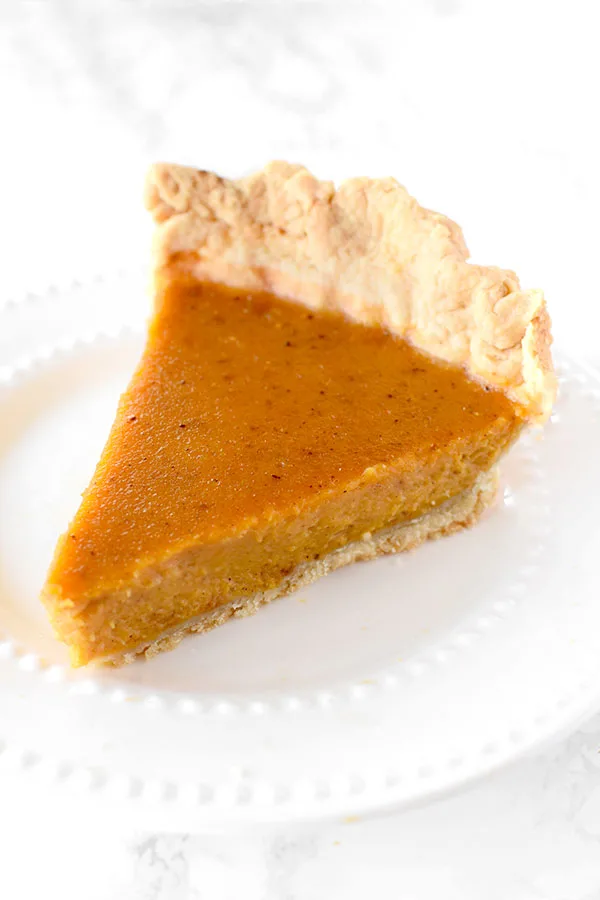
How easy this pie is to make and its perfect texture aren't the only things that make this the best dairy free egg free pumpkin pie.
For any food to be truly great, it must have a delicious flavor, and this pie is based off of my mom's pumpkin pie, which is the best I've ever had, hands down.
Whenever people ask me what my favorite food is, without hesitation, I tell them pumpkin pie. However, I do always have to add a caveat and say it's my mom's pumpkin pie.
I find most pumpkin pies to be pretty bland and boring, but my mom's is filled with flavor, and I can't get enough of it!
The first time I made pumpkin pie on my own, I found it was bland, and my mom told me the secret is more sugar.
So, you if you notice this pie has more sugar than other recipes, that's why - and it is all the better for it!
I've experimented with pumpkin pies a lot...
I've made pumpkin pie with coconut milk, pumpkin pie with almond milk, pumpkin pie with oat milk, pumpkin pie without eggs, and now this vegan pumpkin pie, and they all taste exactly the same because the key is the amount of sugar and the spices.
HISTORY OF PUMPKIN PIE
The pumpkin is native to North America and was served at the first Thanksgiving.
It was an early export from the New World to Europe, and pumpkin pie recipes could be found in seventeenth century English cookbooks.
Pumpkin pies made by early American colonists were very different than what we know today as pumpkin pie.
Their “pies” were actually savory soups made and served in a pumpkin rather than a sweet custard in a crust.
It was not until the early 1800s that the recipes appeared in American cookbooks and that pumpkin pie became a common addition to the Thanksgiving dinner.
At the same time in England, pumpkin “pies” were prepared by stuffing the pumpkin with apples, spices, and sugar, and then baking it whole.
WHY DO WE EAT PUMPKIN PIE ON THANKSGIVING?
This is actually due to the same incredible woman who is behind our celebrating Thanksgiving altogether: Sarah Josepha Hale.
Hale was a prominent writer and editor.
She wrote the children’s poem Mary Had a Little Lamb, helped found the American Ladies’ Magazine – which she used as a platform to promote women’s issues – and was the editor for Godey’s Ladys’ Book for more than 40 years, turning it into one of the most influential periodicals in the country.
While at Godey’s, Hale often wrote editorials and articles about the holidays, including Thanksgiving, despite it not being a holiday yet.
She believed that if Thanksgiving were passed as a federal holiday, it would help ease growing tensions and divisions between the North and South at the time.
Hale advocated for the national holiday for 17 years before it was successful. She wrote presidents Taylor, Fillmore, Pierce, and Buchanan, who all ignored her.
However, this didn’t stop her. She published recipes for the holiday in her magazine so that women would know what to make for it. Among these recipes was pumpkin pie!
It was finally President Lincoln who listened, though he planned on declaring the holiday in April.
Hale wrote again, and within a week, Thanksgiving declared to be on the final Thursday in November.
He hoped, as Hale did, that it would help “heal the wounds of the nation.”
Thanksgiving was declared a national holiday by President Abraham Lincoln halfway through the civil war.
However, since pumpkins were native to the North, southern states had no tradition of eating pumpkin pie, and so they saw it as a symbol of Yankee culture imposed on them.
So, they made sweet potato pie instead. This tradition still holds in the South today, just as pumpkin pie does in the North.
Sugar
The primary role of sugar is to be a sweetener. However, sugar also contributes to the tenderness and moistness of the baked good by absorbing and retaining moisture and helps create the golden brown color when baking as it caramelizes.
Recipes with more sugar often result in softer, moister textures. However, I learned the hard way that too much sugar leads to a sticky mess.
When it's heated, sugar caramelizes, resulting in a rich, complex flavor and a brown color. This adds both flavor and color to baked goods and is also the process in which caramel sauce, dulce de leche, caramel candies, and regular candies are made.
When used in recipes containing yeast, the sugar is eaten by the yeast, producing carbon dioxide and causing the dough to rise.
Sugar also acts as a preservative in jams, jellies, and fruit preserves by reducing water activity and preventing microbial growth.
There are many different types of sugar, including white sugar, brown sugar, vanilla sugar, powdered sugar, turbinado sugar, and demerara sugar.
When a recipe calls for “sugar” without specifying anything else, it's referring to regular white sugar.
White Sugar
White sugar (sometimes called granulated sugar, table sugar, or white granulated sugar) is made of either beet sugar or cane sugar, which has undergone a refining process.
It is the easiest to find and most commonly used.
Brown Sugar
Brown sugar is white sugar with molasses added to it.
It is commonly used in chocolate chip cookie recipes, and it’s rare for a recipe that calls for brown sugar not to also call for white sugar as well.
When a recipe calls for “brown sugar” but doesn’t specify what type (light or dark), it is referring to light brown sugar.
In my recipes, you can use whatever type of brown sugar you have on hand, whether it is dark brown sugar, light brown sugar, or demerara sugar - which is very common in Israel.
Just keep in mind that the flavor and color will be slightly different, depending on what you choose to use.
Turbinado Sugar
Turbinado sugar is better known as "raw sugar." But, despite this name, the sugar is not really “raw.”
Instead, it's partially refined sugar that retains some of the original molasses.
The term "raw sugar" may also give off the impression that it is somehow healthier.
In reality, turbinado sugar is nutritionally similar to white sugar.
Demerara Sugar
Demerara sugar is very popular in Israel and is especially delicious in tea, but is also used for baking.
Unlike white sugar, demerara sugar undergoes minimal processing and retains some vitamins and minerals.
However, it is still not much healthier than white sugar.
Vanilla Sugar
Vanilla sugar is not very common in the States. However, it is common in Israel and parts of Europe.
This is sugar that sat for an extended period of time with vanilla beans, giving it a vanilla flavor.
Caster Sugar
This type of sugar is common in the United Kingdom.
It has a grain finer than white (granulated) sugar and larger than powdered sugar.
Caster sugar is often called for in recipes for delicate baked goods like meringues, souffles, and sponge cakes.
You can use a 1:1 conversion rate between caster sugar and white (granulated) sugar.
Powdered sugar
Powdered sugar, sometimes known as confectioners’ sugar, is a sugar with a powdered texture.
This sugar is rarely used for baking. Instead, it is used for dusting desserts and making frosting, icing, and glazes.
In some countries, you can also find powdered vanilla sugar.
It is made the exact same way regular vanilla sugar is made. However, the sugar used is powdered instead of granulated.
Vanilla Extract vs Vanilla sugar
In my recipes, I don’t specify what kind of vanilla to use.
The reason for this is that in the States, vanilla extract is exclusively used.
Meanwhile in Israel, along with many European countries, vanilla sugar is common.
In most, if not all recipes, both vanilla extract and vanilla sugar can be used.
In recipes where vanilla sugar can be used instead of extract, you can replace them 1:1.
Replacing Sugar with Honey
If you’d prefer to use honey instead of sugar, you can do so with pretty good results.
Honey can be two or even three times as sweet depending on the honey, so for every 1 cup of sugar, you can use ½ to ⅔ cup honey.
Since honey adds liquid, you need to remove some to balance it out. For every cup of honey, remove a ¼ cup of liquid.
Also, it burns faster than granulated sugar, so you want to lower the baking temperature by 25 F. In addition, check it early and often to avoid burning or overbaking.
How to Store Sugar
Sugar should be stored in an airtight container to prevent clumping and moisture absorption, and kept in a cool, dry place.
Cornstarch
Starch is a natural component of almost all grains and some fruits and vegetables.
One of starch’s compelling properties is its ability to absorb and retain lots of liquid.
Starches are incredibly versatile ingredients. They cause the liquid to thicken and add moisture as well as a tender and delicate texture in baked goods.
They can also be combined with water as an egg replacement for eggless and vegan recipes, working as a binder and to add moisture.
In addition, starches are sometimes used to make a coating for frying, which creates a crispy texture on fried foods like fried chicken.
It's also not uncommon to find starch used as a stabilizer.
Cornstarch is one of the most versatile starches there are. It is a terrific ingredient for thickening sauces, puddings, soups, and pie fillings and is also used in many baked good recipes.
Cornstarch Uses
Cornstarch is an underrated and underused ingredient in home kitchens. Here are a number of ways cornstarch can be used:
Cornstarch for thickening soups, stews, and gravies
Cornstarch is often used as a thickening agent when added to soups, stews, and gravies.
This is usually done by making a slurry which is then added to whatever is in need of thickening.
Cornstarch in baked goods
Starch helps keep breads, cakes, quick breads, muffins, cupcakes, and brownies fresh by absorbing and holding liquid.
For breads, you can replace up to ¼ cup of all-purpose flour with cornstarch out of every three cups of flour.
For cakes, quick breads, muffins, and cupcakes, you can replace 2 tablespoons out of every cup of all-purpose flour.
Cornstarch in Cookies
Cornstarch gives cookies a soft center, helps prevent them from spreading, and adds chewiness.
Add ½ to 1 teaspoon of cornstarch per cup of flour called for in the recipe.
Cornstarch for Chewy Brownies
For chewy brownies that taste like those from the box, add 1 tablespoon of cornstarch per ½ cup of flour.
How to substitute Cornstarch
Cornstarch is one of a number of starches available - though it tends to be the easiest to find.
The best alternative to cornstarch in my opinion is potato starch.
You should substitute potato starch for cornstarch in a 1:1 ratio. This means if you need 1 tablespoon of cornstarch, use 1 tablespoon of potato starch instead.
Does pumpkin pie contain dairy?
Usually, it does. Pumpkin pie is typically made with evaporated milk, but you can use coconut milk instead because it has a similar consistency.
IS PUMPKIN PUREE Vegan?
Pumpkin pie puree that is 100% pumpkin or is marked vegan is vegan.
CAN YOU USE REGULAR PUMPKINS TO MAKE PIE?
Technically, you can, but regular pumpkins do not have much flavor. Even sugar pumpkins aren’t ideal for pumpkin pie.
Libby’s uses a specific type of pumpkin called the Dickinson pumpkin that is more similar to butternut squash than regular pumpkin.
WHAT PUMPKIN IS BEST FOR PUMPKIN PIE?
Dickinson pumpkin is best for pumpkin pie. However, since it is hard to find, butternut squash is the best alternative.
HOW DO YOU SUBSTITUTE PUMPKIN PIE FILLING?
If you’re not thrilled by the idea of using filling that comes out of a tin can, or live abroad and don’t have access to pumpkin pie filling, butternut squash is a great substitute.
The New York Times did a pumpkin pie test to see which squash made the best pumpkin pie. As it turns out, butternut squash puree makes for the best pumpkin pie filling!
Also as it turns out, the Dickinson pumpkin used in making Libby’s pie filling is actually the closest in taste and texture to butternut squash.
I can actually confirm this to be true.
After moving to Israel, my mom insisted on growing her own Dickinson pumpkins for pumpkin pie.
Funny thing, I was growing some pumpkins in the garden at the same time as butternut squash from seeds I had saved. Then, one day, we found a butternut squash growing on the pumpkin vine!
Anyway, we made pumpkin pie with the Dickinson pumpkins, and it was exactly like my butternut squash pie.
No surprise, they were both just like Libby’s pumpkin pie filling.
Do you have to put eggs in pumpkin pie?
No, you do not have to put eggs in pumpkin pie. However, if you don't, you'll need to replace them with another thickener.
What happens if you don't put egg in pumpkin pie?
Not using eggs in pumpkin pie doesn't affect the flavor of the pie, but unless you use another thickener, you'll end up with pumpkin pie soup in a crust bowl.
How do I substitute eggs for pumpkin pie?
The secret to getting the perfect pumpkin pie without eggs is using cornstarch as a thickener.
I've used cornstarch for sauces, gravies, and even butternut squash pie when I didn't drain the butternut squash enough, making the mixture too loose.
So, knowing the food science behind cornstarch, it made sense to me to use it to replace the eggs as a thickener in this pumpkin pie.
Honestly, it turned out even better than I was expecting!
To replace eggs in pumpkin pie, you need 2 tablespoons of cornstarch and 3 tablespoons of water per egg - it worked like a charm!
DOES THIS PUMPKIN PIE TASTE LIKE COCONUT?
Nope. There isn’t even a hint of coconut flavor in this pie.
Does this dairy free egg free pumpkin pie taste like regular pumpkin pie?
One thing that can be frustrating about being on a special diet is that the classic foods usually don't taste exactly the same or have a strange texture.
However, this pumpkin pie has the same texture and flavor as regular pumpkin pie.
The only difference is that I use a better pumpkin pie recipe than most, so it will have more flavor.
MAKING AHEAD OF TIME
The filling can be made a day in advance. In fact, doing so allows the flavor of the spices to develop.
Freshly baked pumpkin pie will keep for about 3 to 4 days if covered and refrigerated.
CAN PUMPKIN PIE BE STORED AT ROOM TEMPERATURE?
No. It has a custard filling, so it needs to be refrigerated.
HOW TO STORE
Let cool to room temperature. Cover loosely with plastic wrap or foil. Refrigerate for up to 3 to 4 days.
HOW TO FREEZE
Let cool to room temperature. Wrap in plastic wrap until tightly sealed. Then, wrap in a layer of aluminum foil.
If you do not have plastic wrap and aluminum foil, place it in a resealable freezer bag.
Place on a level freezer shelf and freeze for up to 1 to 2 months. After this, the pie is still safe to eat, but the quality begins to degrade.
DEFROST
When you are ready to defrost the pie, transfer it to the refrigerator. Let thaw for at least 12 hours.
Dairy Free Egg Free Pumpkin Pie
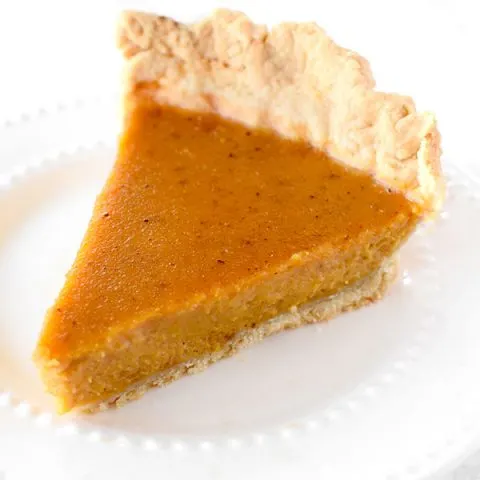
This is the dairy free egg free pumpkin pie is better than just about any pumpkin pie I've ever had, except the recipe this based off of.
Ingredients
- 1 ¼ cup white sugar
- ¼ cup cornstarch
- 1 teaspoon ground cinnamon
- ½ teaspoon salt
- ½ teaspoon ground ginger
- ¼ teaspoon ground cloves
- 15 ounce can 100% pure pumpkin*
- 12 ounce can full fat unsweetened coconut milk
- 6 tablespoons water
- 1 unbaked 9-inch deep-dish pie crust
Instructions
- Preheat your oven to 325°F or 165°C.
- Place sugar, cornstarch, cinnamon, salt, ginger, and cloves in a medium or large mixing bowl. Whisk to combine.
- Add pumpkin filling, coconut milk, and water. Whisk together by hand until well combined.
- Using a rubber spatula, pour the filling into a pie shell. Bake on the middle rack for 50 to 55 minutes or until the center has set.
- Cool on a wire rack until it reaches room temperature (about two hours). Refrigerate for 2 hours or overnight.
Notes
*If you'd rather not use canned pumpkin, you can use homemade butternut squash puree and it will taste exactly the same and even have a little prettier of a color.
Recommended Products
Some of the links below are affiliate links, which means that if you choose to make a purchase, I will earn a small commission. This commission comes at no additional cost to you.
Nutrition Information:
Yield:
8Serving Size:
1Amount Per Serving: Calories: 193Total Fat: 3gSaturated Fat: 1gTrans Fat: 0gUnsaturated Fat: 1gCholesterol: 0mgSodium: 168mgCarbohydrates: 43gFiber: 1gSugar: 35gProtein: 1g

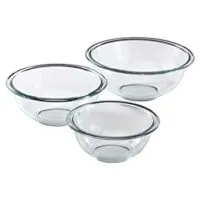
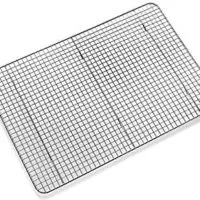
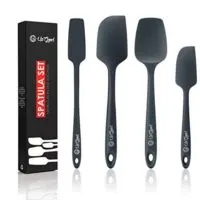
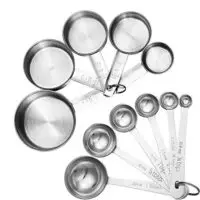
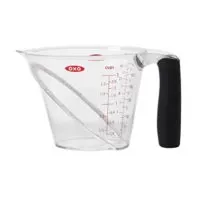
chukka
Friday 25th of November 2022
My husband and I both came to the conclusion that this is probably the best pumpkin pie, vegan or non-vegan, that we've ever had! I made it because my son is dairy and egg allergic, but I will make this version from now on for everyone. The only things I changed was: I added 1/2 tsp nutmeg, and about 1/2-1 teaspoon of pumpkin spice blend to really spice it up, and used a graham cracker crust. I also cooked it for at least 1.5 hours, since the middle was still liquid at 50 minutes. But wow! Home run of a recipe, thank you!
ElissaBeth
Friday 25th of November 2022
You're so very welcome! I am really glad to hear you and your family enjoyed it as much as I do :)